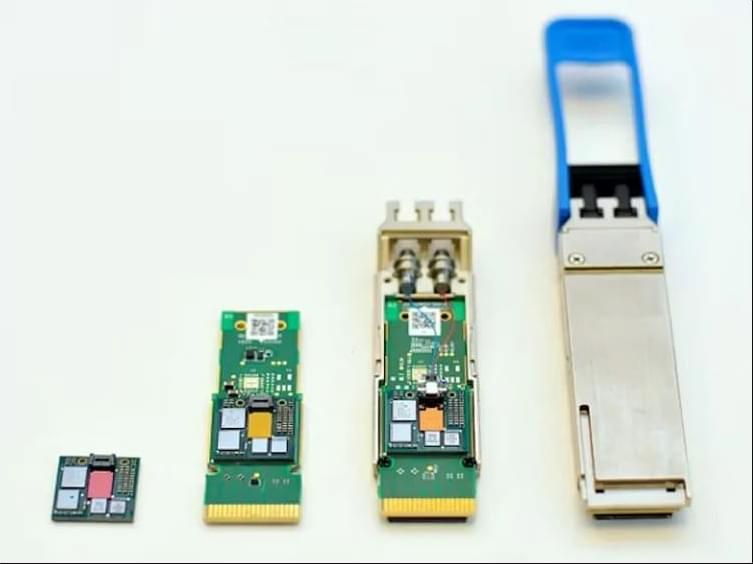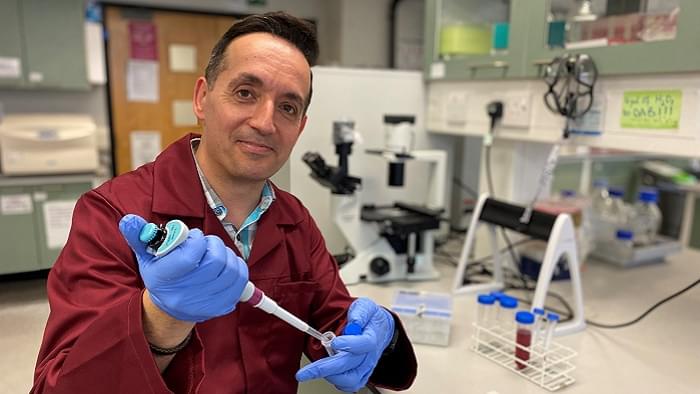Physicists have made a substantial breakthrough in understanding subatomic physics by measuring a second mechanical property of protons: the shear force experienced internally. Protons and the… Continue Reading →



IN A NUTSHELL 🌟 Rice University researchers developed a groundbreaking glass coating that reflects heat and reduces energy costs. 🔬 The coating is made from a tough layer of boron nitride and carbon, offering resistance to UV light and temperature swings. 💡 This innovation uses pulsed laser deposition at room temperature, making it cost-effective and.

Growth in 2.5D and 3D packaging solutions has accelerated off-the-board technology and the components which leverage it, both in terms of the fastest digital processors but also in proprietary ASICs and application processors. As high-bandwidth digital channels approach the practical limits of copper interconnects, silicon photonics and on-PCB/in-package optical interconnects may emerge as the next transformative wave of off-the-board technology.
This opinion is shared by insiders within the PCB and packaging side of the industry.
“Off the board technology is growing at an amazing rate, and isn’t being replaced by optical solutions, it’s enabling more optical solutions,” said Joe Dickson, senior VP chip-to-chip reliability and innovation at WUS PCB International. “They are not competition, they are tools to go much farther than we can today.”
A multinational research team, including engineers from the University of Cambridge and Zhejiang University, has developed a breakthrough in miniaturized spectrometer technology that could dramatically expand the accessibility and functionality of spectral imaging in everyday devices.
The study, titled “Stress-engineered ultra-broadband spectrometer,” published in the journal Science Advances, describes a novel, low-cost spectrometer platform built from programmable plastic materials rather than conventional glass.
These innovative devices operate across the full visible and short-wave infrared (SWIR) range—spanning 400 to 1,600 nanometers—which opens up a wealth of possibilities for real-world applications.

Researchers also found that the treatment was safe and well-tolerated. Participants did not report any serious adverse reactions in the follow-up period of 6–12 months.
The most common reaction was a reduction in the number of the immune system’s neutrophils, a type of white blood cell.
“OTOF is just the beginning,” Dr Duan said, adding that researchers were working on other common genes behind deafness such as GJB2 and TMC1.

Doctors in Shanghai have, for the first time in the world, cured a patient’s diabetes through the transplantation of pancreatic cells derived from stem cells.
The 59-year-old man, who had Type 2 diabetes for 25 years, has been completely weaned off insulin for 33 months, Shanghai Changzheng Hospital announced on May 7.
A paper about the medical breakthrough, achieved after more than a decade of endeavor by a team of doctors at the hospital, was published on the website of the journal Cell Discovery on April 30.
It is the first reported instance in the world of a case of diabetes with severely impaired pancreatic islet function being cured via stem cell-derived autologous, regenerative islet transplantation, the hospital said. The most common pancreatic islet cells produce insulin.
(Circa 2024)

Researchers in Sheffield Hallam University’s Biomolecular Sciences Research Centre, in partnership with Paxman, have discovered that combining scalp cooling treatment with antioxidants can significantly reduce or even prevent the damage to hair follicles caused by chemotherapy drugs. This breakthrough has the potential to enhance and standardise scalp cooling efficacy levels, potentially transforming it into a more consistent and universally reliable method.
Led by Dr Nik Georgopoulos, the study uses human keratinocytes and hair follicle cultures to test the effects of cooling and antioxidants on chemotherapy-treated cells. The research was the culmination of years of work in partnership with the Paxman Scalp Cooling Research Centre.
The paper, which has been published today (Tuesday 8 July) in the journal Frontiers of Pharmacology, showed for the first time that.
New breakthrough in preventing chemotherapy-induced hair loss and could make a real difference to the lives of cancer patients worldwide.

Imagine a world where our skyscrapers gleam with the warmth of timber instead of the chill of steel. Superwood, the latest breakthrough from InventWood, promises just that—combining the best of nature and engineering to outstrip traditional metals.